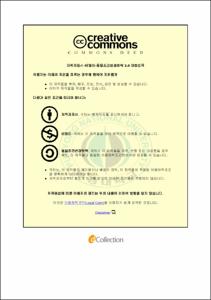Epstein Barr Virus 감염 세포 유래 exosome에 의한 다발성 골수종 세포의 비타민 D 수용체 발현 조절
- Abstract
- Abstract
Objective: Epstein-Barr Virus is causative agent of cancer, and most people in the world have EBV in B cells. It has been reported that EBV is associated with multiple myeloma. The therapy of multiple myeloma has been reported that it has effect on several anticancer drug and vitamin D. In this study, effect of EBV-infected cells or EBV itself on multiple myeloma is vitamin D receptor regulation and the resulting drug resistance.
Method: I add B95-8 cell supernatant generating EBV to a multiple myeloma cell line NCI-H929. To analyze the expression of vitamin D receptor, RT-PCR, western blot, flow cytometry were performed. EBV infection in NCI-H929 was measured by RT-PCR. In order to confirm the presence of EBV, RT-PCR for EBV genes in genomic DNA extracted from cell supernatant was performed. I measured the cell proliferation by Alamar Blue assay vitamin D result from vitamin D receptor expression difference. And I measured apoptosis through Annexin V staining flow cytometry.
Results: VDR mRNA and protein were decreased when NCI-H929 cells were incubated with B95-8 cell supernatant. However, as examining whether cells were infected with EBV, there was no mRNA related with EBV genes. When I checked cellular response resulting from the differences in the expression of vitamin D receptor, experiments for cell proliferation and apoptosis showed that NCI-H929 have a resistance to vitamin D toxicity after adding with B95-8 cell supernatant. I found that vitamin D receptor expression was decreased in NCI-H929 when I treated the exosome from B95-8 cell supernatant.
Conclusion: Vitamin D receptor expression was decreased when I treated the B95-8 cell supernatant into NCI-H929 cell. As a result, it showed resistance to the toxicity of vitamin D. It is assumed that exosome component of EBV-infected cell regulates vitamin D receptor. Therefore, it can present the theoretical basis for vitamin D resistance appeared in multiple myeloma caused by the EBV-infected cells.
- Issued Date
- 2012
- Awarded Date
- 2012. 8
- Type
- Dissertation
- Publisher
- 부경대학교
- Affiliation
- 부경대학교 교육대학원
- Department
- 교육대학원 생물교육전공
- Advisor
- 김군도
- Table Of Contents
- Ⅰ. 서론 1
Ⅱ. 재료 및 방법 10
1. 세포 배양 및 세포 종류 10
2. B95-8 세포주를 이용한 EBV 감염 배양액 제작 10
3. Alamar Blue로 세포 증식 반응 측정 11
4. RT-PCR 11
5. Western blot 12
6. 유세포 분석기(flow cytometry) 13
7. Total DNA 추출 및 EBV 관련 유전자 발현 확인 14
8. transwell을 이용한 coculture 14
9. exosome 추출 및 처리 15
Ⅲ. 결과 16
1. B95-8 세포 배양액 첨가 후 비타민 D 수용체 발현 차이 16
2. EBV 감염 여부 측정 20
3. 세포와 세포 배양액에서 EBV 관련 유전자 발현 22
4. 다른 세포 배양액 첨가 후 비타민 D 수용체 발현 차이 24
5. B95-8 세포 배양액 첨가 후, 비타민 D 반응 변화 29
6. transwell을 이용한 coculture 후 비타민 D 수용체 발현 차이 32
7. exosome 추출 여부 측정 34
8. exosome 첨가 후 비타민 D 수용체 발현 차이 36
Ⅳ. 고찰 38
Ⅴ. 요약 41
Ⅵ. 참고문헌 42
- Degree
- Master
- Files in This Item:
-
-
Download
 Epstein Barr Virus 감염 세포 유래 exosome에 의한 다발성 골수종 세포의 비타민 D 수용체 발현 조절.pdf
기타 데이터 / 2.29 MB / Adobe PDF
Epstein Barr Virus 감염 세포 유래 exosome에 의한 다발성 골수종 세포의 비타민 D 수용체 발현 조절.pdf
기타 데이터 / 2.29 MB / Adobe PDF
-
Items in Repository are protected by copyright, with all rights reserved, unless otherwise indicated.